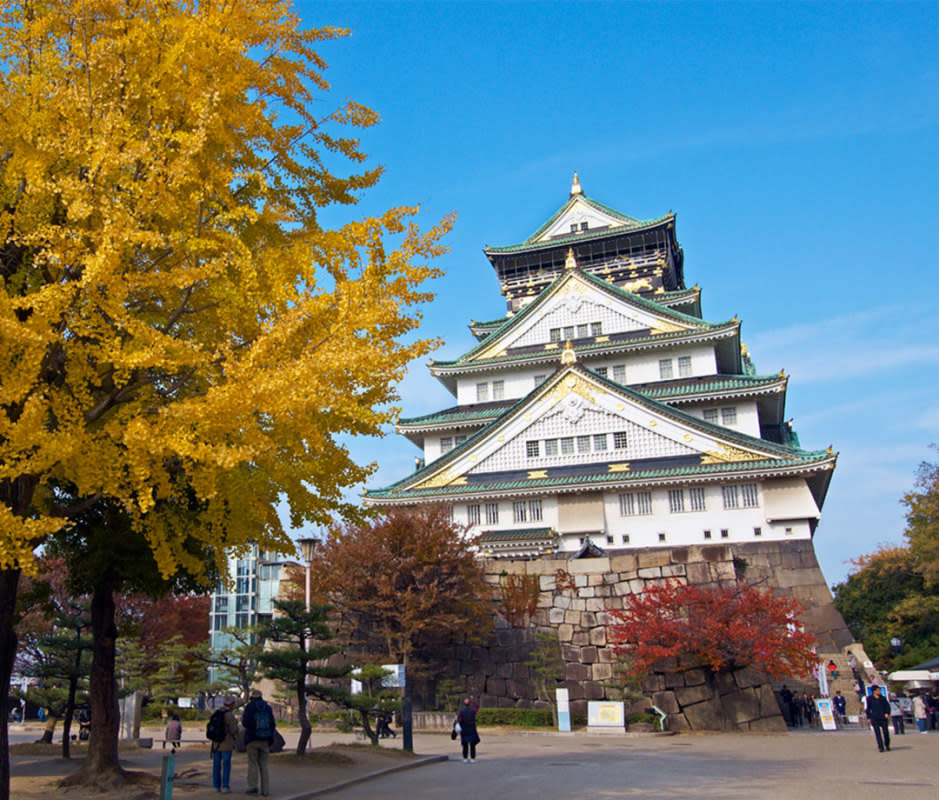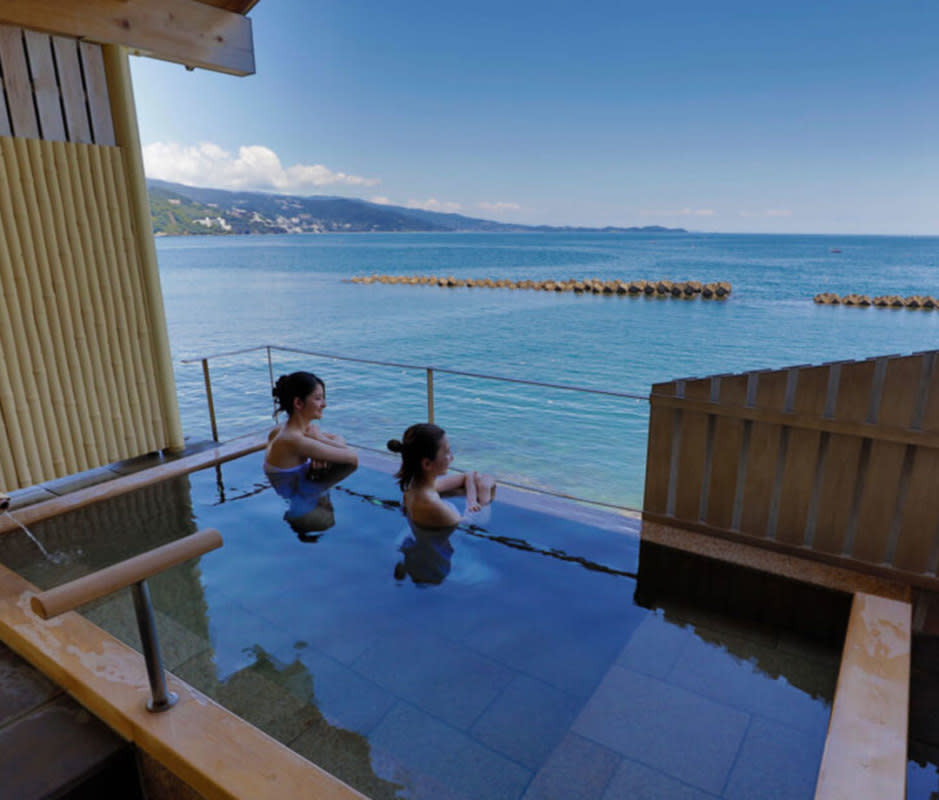7 Best Places in Japan That 'Shōgun' Fans Need to Visit for Real
Shōgun hit its stride right out of the gate when its first two episodes were released in late February, becoming Disney’s No. 1 scripted series premiere globally. With its finale scheduled for April 23, the 10-episode FX/Hulu series based on the bestselling 1975 James Clavell novel has confirmed that samurai battles, feudal-era court intrigue, and the introduction of “pillowing” to the sexual lexicon are pure streaming gold. The show also offers a big-budget introduction to traditional values that still run deep in Japan—and, in particular, the veins of history that remain relevant there to this day.

Courtesy image
At the center of Shōgun is the relationship between British sea pilot John Blackthorne (Cosmo Jarvis) and Lord Yoshii Toronaga (Hiroyuki Sanada), a fictionalized version of the real-life Tokugawa Ieyasu, the first shogun, or military dictator, credited with unifying the Japanese islands into one country in 1600.
Though the show was primarily filmed in British Columbia, Canada, it still serves as an epic primer on historical Japan—if you know where to look. With the final episode fast approaching, the limited series is now sure to inspire pilgrimages to Shōgun's homeland by ardent fans pinning slim hopes on a season two (not likely, according to the creators). From the Tokyo Ninja Museum to the country’s most famous samurai battlefield, here are the seven most exciting historic sites across Japan that Shōgun devotees need to see for themselves.
Gifu Sekigahara Battlefield Memorial Museum: Gifu Prefecture

Visit Gifu
Just as Americans know Gettysburg, all Japanese know Sekigahara. In the mountains of central Honshu in Gifu Prefecture, Sekigahara was the site of a ferocious battle in 1600 between various alliances of feudal clans. The biggest samurai battle in history saw more than 170,000 warriors arranged into Eastern and Western armies, fighting to the death in this now-serene mountain valley. The first shogun, Tokugawa Ieyasu (Toronaga), prevailed, ending Japan’s Sengoku or Warring States Period, unifying the country and establishing the Tokugawa Shogunate that ruled Japan for more than 250 years.
Opened in 2020, the large, state-of-the-art, experience-based museum and information center standing there now presents recreations of the Battle of Sekigahara. A VR attraction “allows you to experience firsthand man-to-man combat of the Sengoku period.” But this is also hallowed ground in a rural part of Japan where spirits can still seem nearby.
Related: These Are Our Favorite 10 Spots to Explore in Europe’s Hottest Coastal Getaway Destination
Though author Clavell disappointed many readers by only referencing Sekigahara, fans of the FX/Hulu series are anticipating the climactic battle here to be depicted in gut-spilling fashion. Either way, Sekigahara occupies the martial heart of Shōgun.
Getting There: The trip takes about two hours by Tokaido Shinkansen from Tokyo Station to Nagoya Station, then an additional 45 minutes by JR Tokaido Main Line from Nagoya Station to Sekigahara Station. From Sekigahara Station, it’s a quick cab ride or 10-minute walk to the battlefield and museum. Though possible to do as a long day trip from Tokyo, instead Gifu City, about 30 minutes away by train or taxi, is the best place to overnight.
Osaka Castle: Osaka Prefecture

Osaka Info
Feudal Japan was a risky place to wield a sword. Warfare was widespread as lords plotted against other lords, then sent faithful samurai to risk their lives when swordplay was required. In the meantime, nobles not prone to death-wish culture took refuge behind castle walls whose fortress architecture of wood and stone evolved into a classic design featuring a tall, central tower.
In Shōgun’s premiere episode, Lord Toronaga is summoned to Osaka Castle for a tense meeting with the Council of Regents, which wishes to impeach him. From there, the castle is featured as a place of intrigue and danger, then the planned target of Toranaga’s “Crimson Sky” attack. In reality, the castle was a power center in the historic negotiations and battles that ultimately unified the country. Built by 100,000 workers between 1583 and 1586, it was renowned both for its imposing tactical fortifications and extravagant interior décor. Tokugawa (Toronaga) and his 200,000-man army eventually laid siege to Osaka, capturing the castle in 1615. After that, its relevance faded, though Osaka grew into Japan’s third-largest city. A CGI rendering of Osaka Castle appears in the opening credits and occasional establishing shots throughout the series.
Reconstructed many times—lightning strikes in the 1600s set the castle on fire, while American planes bombed it during World War II—Osaka Castle is now one of Japan’s top tourist attractions. The castle tower is surrounded by citadels, gates, turrets, stonewalls, moats, and 600 cherry trees. Self-guided tours take a couple hours, but your grandpa could easily linger all afternoon reading signs.
Getting There: Osaka Castle is surrounded by five different train stations, but the best access is via either Morinomiya or Osakajokoen Station. The approach from both follows a pathway toward the castle through its extensive gardens.
Samurai Ninja Museum Tokyo

Samurai Ninja Museum Tokyo
References to “Edo” (Lord Toranaga’s fiefdom) are scattered throughout Shōgun, but little action is depicted there. Though important to Toranaga, Edo didn’t become Japan’s central city until after Tokugawa (Toranaga) established the Tokugawa Shogunate there in 1603, after the Battle of Sekigahara. Though Edo grew into a city of over a million in the 1700s, Kyoto remained the formal capital of the nation. Only when imperial rule was restored in 1868 did the Emperor move to Edo. The city was renamed Tokyo and became the capital of Japan.
While no worthwhile series-specific sites are found in modern Tokyo, the city is home to a fun samurai museum. It features interactive exhibitions, including hands-on samurai and ninja experiences. Visitors can handle weapons, try on suits of armor, and learn skills like throwing shuriken (ninja star blades) and using a blowgun. The collection of artifacts and models is remarkable and exhibits explain the enduring cultural legacy of samurai and ninjas.
Related: 2024 Men’s Journal Travel Awards: Best Vacations, Hotels, and Luggage
Getting There: Tokyo’s Samurai Ninja Museum is a two-minute walk from Tawaramachi Station on the Tokyo metro Ginza Line; a two-minute walk from Asakusa Station on the Tsukuba-Express; or an eight-minute walk from Asakusa Station on the Tokyo metro Ginza Line/Asakusa Line.
Ajiro Onsen Hiratsuru: Atami City, Shizuoka Prefecture

Ajiro Onsen Hiratsuru
After narrowly escaping an assassination attempt in Osaka, Blackthorne is removed to the fishing village of Ajiro (Clavell called it Anjiro), the southernmost part of the modern town of Atami, on the Izu Peninsula, about two hours south of Tokyo by train. Among other lessons in his new home, Blackthorne learns the importance of bathing—the Japanese far outpaced lice-ridden Europeans when it came to personal hygiene.
Though modernized, scenic Atami remains an excellent spot for a soak at Ajiro Onsen Hiratsuru, the local hot springs (onsen) where Tokugawa himself is recorded to have bathed with his sons in 1604. At Ajiro Onsen Hiratsuru, the indoor and open-air baths come with amazing views of Sagami Bay.
Getting There: Travel time from Tokyo Station to Atami Station is about 50 minutes by the Tokaido Shinkansen Kodama train. Travel time from Tokyo Station to Atami Station is about 90 minutes by the JR Odoriko or Super Odoriko limited express trains.
Furuya Ryokan: Atami City, Shizuoka Prefecture

Furuya Ryokan
Ajiro Onsen Hiratsuru can be managed as a day trip from Tokyo, but an overnight at a traditional Japanese inn (ryokan) connects you with the kind of lavish lifestyle Blackthorne enjoyed as a prisoner on the Izu Peninsula (minus the gratis consorts). Among many in the area, Furuya Ryokan, established in 1806, gets the nod for its magnificent tatami guest rooms, artistically presented cuisine, on-site onsen baths, and English-friendly staff.
Getting There: From Atami Station (see above), the ryokan is five minutes by taxi and 15 minutes by foot.
Dejima: Nagasaki City

Discover Nagasaki
Culture clashes that resulted from early Japanese interactions with Europeans during the Age of Discovery provide the emotional fuel in Shōgun. Japan’s first contact with the West came in 1543, when three Portuguese merchants landed in the country’s southern islands. (Shōgun moves this location north to the Izu Peninsula.) The Portuguese brought trade but also Catholicism, which spread so quickly that local leaders adopted a policy of seclusion, in particular confining missionary movements.
In Shōgun, Japanese attitudes toward the Portuguese interlopers are rightly portrayed as a mixture of opportunism and suspicion—particularly toward Father Martin Alvito (Tommy Bastow) and Blackthorne’s frenemy, the sailor Vasco Rodrigues (Nestor Carbonell).
Today, engulfed by the city of Nagasaki in southern Japan, Dejima was a man-made island constructed in 1636 to segregate Portuguese residents from the Japanese population. After the Portuguese were expelled, the Dutch were restricted to Dejima during Japan’s two centuries of isolation as the only Westerners allowed in the country.
Related: 50 Best Vacations in the U.S.—Ranked by Travel Experts
Now surrounded by urban modernity, more than 15 of Dejima’s historical structures have been painstakingly reconstructed, including furnished warehouses and residencies such as those where the Portuguese of Shōgun might have concocted their get-rich-save-souls schemes. After a facelift, the area was reopened in 2006 with walking maps and English signage. Allow an hour or two to tour.
Getting There: Dejima is a 20-minute walk from Nagasaki Station. Or you can take streetcar No. 1 and get off at the Dejima stop.
Sendai-ya: Tokyo

JNTO
Nothing separates cultures like food—and a British sailor washing up in Japan in 1600 would likely have been at least a little freaked out by the local fare. In Shōgun, however, the English pilot Blackthorne performs admirably at the supper table, impressing the natives by displaying openness to exotic grub of which they’re exceedingly proud.
In a key scene, he bravely takes on natto—a sticky concoction made from fermented soybeans that’s notoriously challenging for Western palates—then raises eyebrows by going back for seconds. Blackthorne compares the taste to a particularly rank cheese. In another scene, however, he betrays his barbaric tendencies by forcing a sake-chugging contest on a rival.
While you can get natto (and sake) pretty much anywhere in Japan, the specialists at Tokyo’s Sendai-ya serve several varieties of natto, including, for those channeling Blackthorne courage, natto ice cream. You know you’re in for an experience when the shop’s owners vow, “Our mission is to contribute to Japanese food culture through safe, secure, and delicious natto.” Safe and secure, maybe. As for delicious, this is a great spot to decide if Blackthorne was faking it all along.
Getting There: Sendai-ya is located in suburban Setagaya, a special ward about eight miles southwest of the Tokyo metropolis. Setagaya is accessed from Tokyo by taxi (fastest) or regular rail service on various Tokyo Metro lines.
